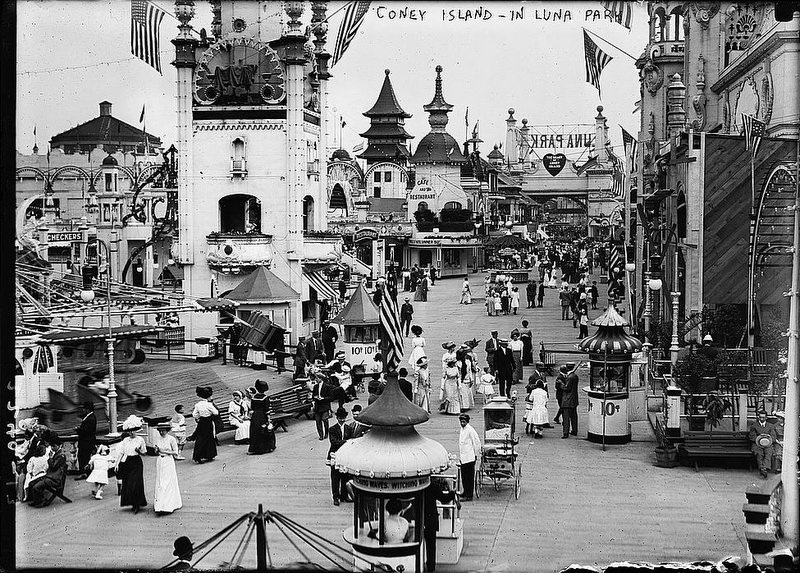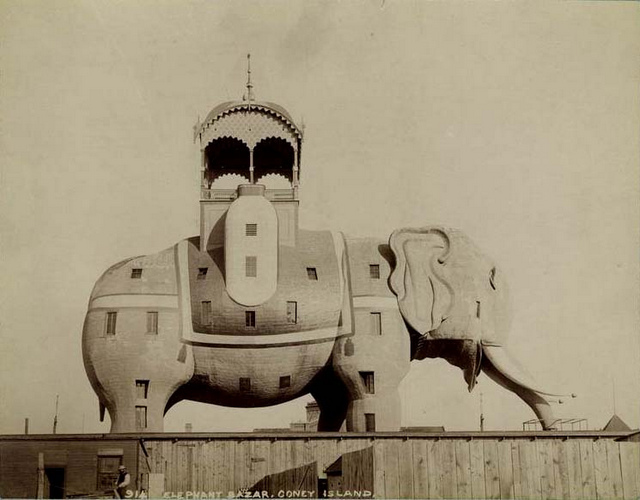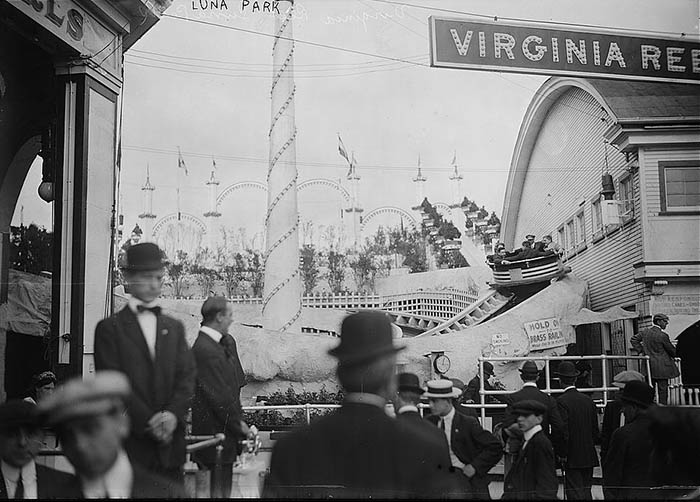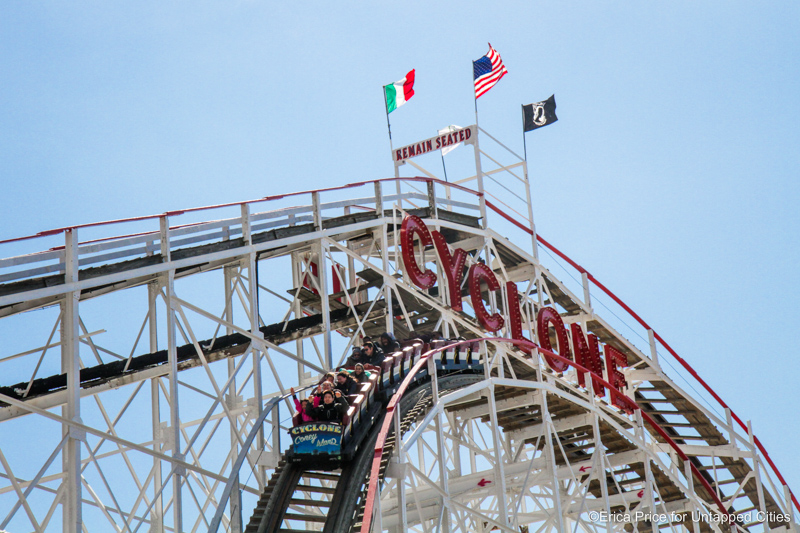
Many New Yorkers can remember amusement parks like Nunley’s in Nassau County and perhaps Palisades Amusement Park in New Jersey, yet there were at least 20 amusement parks in New York City’s history, many of which are obscure even to long-time city residents. Some may have even attended parks like Freedom Land in the Bronx and Rockaway’s Playland in Queens. Throughout New York’s history, amusement parks have had their fair share of economic distress. A majority have at some point suffered from disastrous fires, while others have suddenly closed due to construction projects. Here is our list of lost amusement parks, from the earliest to the most recent. Some closed as early as 1899 while others closed a decade ago.
1. Coney Island Amusement Parks (First roller coaster opened in 1884)

Between 1880 and World War II, Coney Island was perhaps the largest amusement area in the United States, attracting several million visitors a year. At its height, Coney Island housed three competing amusement parks: Dreamland, Luna Park, and Steeplechase Park. Coney Island also saw a number of more obscure amusement parks like the short-lived Sea Lion Park. The first roller coaster at Coney Island was LaMarcus Adna Thompson’s Switchback Railway, constructed in 1884 and cost five cents per ride. One year later, the Elephantine Colossus, a seven-story building in the shape of an elephant, opened to the public.

Coney Island’s first amusement park was Sea Lion Park, which operated from 1895 until 1902 before its replacement by Luna Park. Sea Lion Park was the first enclosed and permanent amusement park in North America. The park housed a ride called the Water Chute as well as the Flip Flip Railway. The amusement park was opened by Paul Boyton, known for purchasing Topsy the Elephant, yet he was forced to close the park as a result of loss of profit in 1902 due to poor weather.

The opening of Sea Lion Park quickly prompted entrepreneur George C. Tilyou to open Steeplechase Park in 1897, originally constructed as merely standalone attractions. The 15-acre park, with admission of 25 cents per person, featured dozens of attractions including a gondola ride called the Human Niagara, a Wild West sideshow, and an Aerial Racing Slide, as well as scale models of the Eiffel Tower and The Palace of Westminster’s Clock Tower. A 1907 fire started in the Cave of the Winds attraction, resulting in $1.5 million in damages, yet by 1909 Steeplechase Park was restored and reopened.
The park later saw the addition of the Parachute Jump following the 1939 World’s Fair, yet high crime and residential development led to the park’s closure in 1964. Fred Trump, the father of Donald Trump purchased Steeplechase Park in 1964 with grand hopes to build Trump Village, a waterfront housing complex on Coney Island.

Six years after Steeplechase Park opened, competitor Luna Park began operations in 1903 by Frederic Thompson and Elmer “Skip” Dundy. More than $700,000 was spent on constructing Luna Park following Sea Lion Park’s closure; some of the rides like Shoot the Chutes were left over from Sea Lion Park. The Oriental-themed park featured a 200-foot-tall Electric Tower in the center of a lake, buildings with domes lit up by electric lights, and The Dragon’s Gorge. A fire on August 13, 1944, destroyed much of Luna Park, and legal disputes over the park’s insurance money prevented it from ever reopening.
Dreamland was the last of the three original large amusement parks built on Coney Island, founded in 1904 by William H. Reynolds. The park was designed specifically to compete with Luna Park, known for its many rides and chaotic noise. In contrast, Dreamland featured refined architecture, a central tower with one million electric light bulbs, and (what was considered) high-class entertainment like Orient Theater’s “Feast of Belshazzar and the Destruction of Babylon.” Attractions included a “Lilliputian Village” with three hundred dwarf inhabitants, a Swiss alpine landscape, and even a display of baby incubators. Dreamland closed very shortly after its grand opening in 1911, due to a massive fire caused by an electrical malfunction.

Much more recently was the closure of Astroland, open from 1962 to 2008, which was built as a “space-age” theme park. Rides included the Astrotower gyro tower, the Power Surge, and the Mercury Capsule Skyride. Astroland also operated The Cyclone beginning in 1975. The park continued the festive atmosphere of Coney Island for nearly five decades, yet the park closed in 2008 after it was purchased by the Albert family for $30 million, the land intended to be redeveloped into a year-round resort. A newly-built Luna Park opened in the spot of Astroland in 2010.





